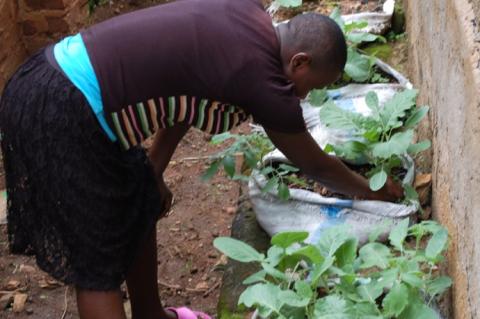Student rewards her urban farming sweat with Easter meal By Claire Z Balungi

urban farming
Last year, the Network for Active Citizens in partnership with Dreamtown, a non-governmental organisation, taught youth, who came to be known as community journalists, about the importance of urban farming in mitigating some of the effects of climate change.
Armed with the knowledge I had received in the training, I approached Nambupi Flavia, to preach to the 18-year-old Senior Three student at Mukono High School about the benefits of urban farming. At the time, I did not have much hope in the impact of the words I was sowing in Nambupi.
Indeed, it took her not less than eight months to put into practice what we had discussed about how to make better use of spaces in someone’s home, however small they are.
Recently, I went back to check on the progress, if any. “When I learnt that I didn’t have to use a large space to grow vegetables, I bought some seeds of collard greens (Sukuma wiki seeds) from the market and put them in a nursery bed for three weeks. They were transferred to the main garden, at the backyard of my house,” Nambupi narrates.
By Claire Z Balungi
Community Journalist
The growth of the vegetables was compromised by the hot sunny season, so she had to water the plants, morning and evening, for three weeks.
When pests attacked the plants, Nambupi did not have money to buy pesticides, so she improvised with the local pesticides - she mixed water and ash and sprinkled it on the leaves, which by then had small holes - a sign of the pest attack. This method was effective and it reduced on the pests. Though it took time, it paid off.
Nambupi’s first harvest made her Easter holiday meal. She now says she will not look back again, as far as urban farming is concerned.
